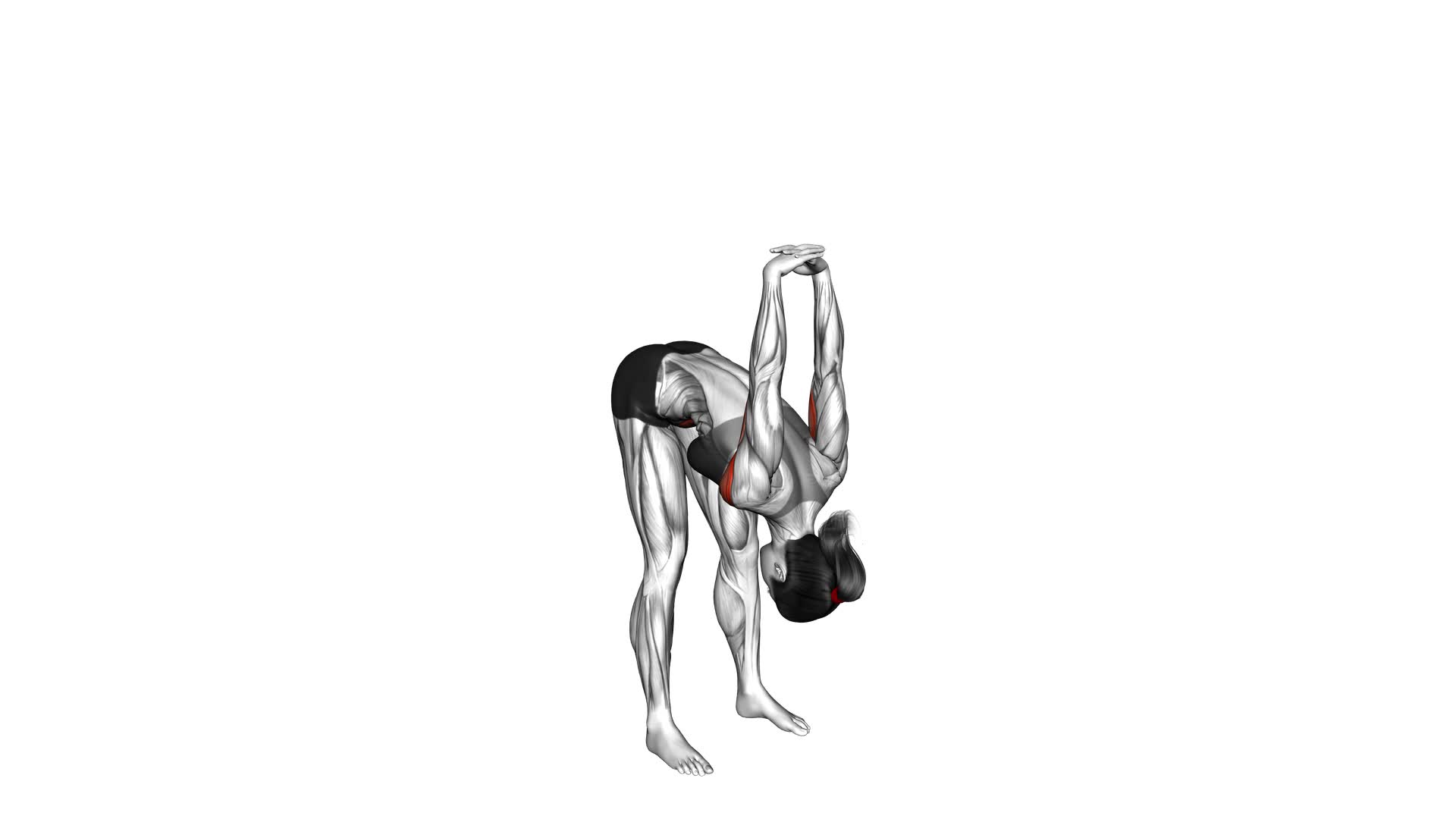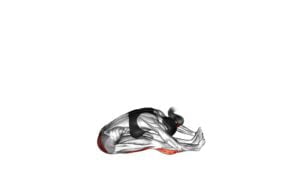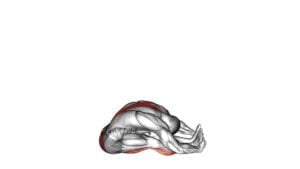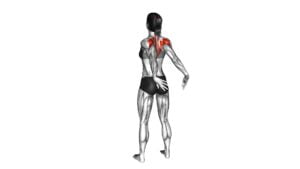Forward Bend Back Stretch (female) – Video Exercise Guide & Tips

Are you looking for a way to improve your flexibility and relieve tension in your back? Look no further than the forward bend back stretch!
Watch This Exercise Video
This video exercise guide and tips are specifically designed for women, helping you achieve maximum results.
Learn the proper technique, modifications, and expert tips to make the most out of this stretch.
Incorporate the forward bend back stretch into your routine and experience the benefits firsthand.
Key Takeaways
- Reduces risk of injuries
- Strengthens and elongates back, hamstrings, and calves
- Improves flexibility in spine and legs
- Enhances athletic performance
Benefits of the Forward Bend Back Stretch
To maximize the effectiveness of your forward bend back stretch, hold the position for at least 30 seconds. This simple yet powerful stretch offers numerous benefits for injury prevention and flexibility improvement.
By regularly incorporating the forward bend back stretch into your exercise routine, you can help reduce the risk of injuries by strengthening and elongating the muscles in your back, hamstrings, and calves. This stretch also helps improve flexibility in these areas, allowing for better range of motion in your spine and legs.
Enhanced flexibility can't only improve your athletic performance but also help with everyday activities such as bending down to pick up objects or reaching for items on high shelves. Additionally, the forward bend back stretch promotes better posture by stretching and lengthening the muscles that tend to become tight and shortened from sitting or standing for long periods.
Now that you understand the benefits of the forward bend back stretch, let's move on to discussing the proper technique for performing this stretch.
Proper Technique for the Forward Bend Back Stretch
To perform the forward bend back stretch correctly, start by standing with your feet hip-width apart. Here are some tips to ensure you have the proper technique for this exercise:
- Hinge at the hips: As you bend forward, focus on hinging at your hips rather than rounding your back. This helps to stretch your hamstrings and lower back effectively.
- Engage your core: To protect your lower back and maintain stability, engage your core muscles throughout the movement. This will also help you maintain a straight spine.
- Relax your neck and shoulders: Avoid tensing up your neck and shoulders during the forward bend. Let them relax and hang naturally to allow for a deeper stretch.
- Breathe deeply: Inhale deeply as you lengthen your spine, and exhale as you fold forward. Deep breathing helps to relax your body and enhance the stretch.
Avoid these common forward bend mistakes:
- Rounding the back: Keep your spine straight and avoid rounding your back to prevent strain and potential injury.
- Overstretching: Gradually ease into the stretch and listen to your body. Avoid pushing yourself too far, especially if you're a beginner.
For advanced variations of the forward bend back stretch, you can try placing your hands on the ground or using props like blocks to deepen the stretch. Remember to always maintain proper form and listen to your body's limits to prevent injuries.
Modifications for Women in the Forward Bend Back Stretch
Continuing from the previous subtopic, modify the forward bend back stretch to better suit women by focusing on specific areas of flexibility and strength. Women tend to have greater flexibility in their hips and lower back, so it's important to emphasize these areas during the forward bend back stretch.
One modification you can make is to widen your stance slightly. This will allow for a deeper stretch in the hips and lower back. As you bend forward, keep your knees slightly bent to avoid putting too much strain on the lower back. This modification will help to target the specific areas of flexibility that women typically have.
Another modification is to use props such as blocks or a strap. Placing a block under your hands can help to bring the floor closer to you, making the stretch more accessible. Using a strap can also assist in reaching forward and lengthening the spine. These props can be especially helpful for women who may have tighter hamstrings or limited flexibility in their backs.
Incorporating these modifications into your forward bend back stretch will help to better suit the needs of women by focusing on their specific areas of flexibility and strength. Remember to listen to your body and adjust the stretch as needed.
Tips for Getting the Most Out of the Forward Bend Back Stretch
To maximize the benefits of the forward bend back stretch, focus on incorporating these tips into your routine:
- Maintain proper form: One common mistake is rounding the back instead of keeping it straight. Remember to engage your core and lengthen your spine as you bend forward.
- Start slowly and gradually increase intensity: When first starting out, it's important to take it easy and listen to your body. As you become more comfortable, you can gradually deepen the stretch and increase the duration.
- Use variations to target specific areas: The forward bend back stretch can be modified to target different muscles. For example, if you want to focus on your hamstrings, you can bend your knees slightly or use a prop like a yoga block.
- Breathe deeply and relax: It's crucial to maintain a steady breath throughout the stretch. Deep breathing helps to relax the body and allows for a deeper stretch.
Incorporating the Forward Bend Back Stretch Into Your Routine
Once you have mastered the proper form and technique, it's time to incorporate the forward bend back stretch into your regular exercise routine. Incorporating stretches into your routine is essential for maintaining flexibility and preventing muscle tightness.
The forward bend back stretch is a great addition to any routine as it targets the muscles in your back, hamstrings, and calves.
To incorporate the forward bend back stretch, start by performing it after a warm-up or as part of your cool-down. Begin by standing with your feet hip-width apart and slowly bend forward from your hips. Allow your upper body to hang down towards the floor, reaching towards your toes. Hold this position for 15-30 seconds, breathing deeply and focusing on relaxing your muscles.
To add variation to the forward bend back stretch, you can try bending one knee and straightening the other, alternating sides to stretch different areas of your back and legs. Another variation is to place your hands on a block or step to increase the stretch.
Remember to listen to your body and never force yourself into a stretch. Incorporating the forward bend back stretch into your routine will help improve your flexibility and overall well-being.
Frequently Asked Questions
Can Men Also Perform the Forward Bend Back Stretch?
Yes, men can also perform the forward bend back stretch. This exercise provides numerous benefits for men, such as improving flexibility and strengthening the back muscles.
To modify the stretch for men, it's important to consider any differences in body proportions and strength. Adjustments can be made by widening the stance or using props for support.
Remember to listen to your body and modify the stretch as needed to ensure safety and effectiveness.
How Often Should I Perform the Forward Bend Back Stretch?
To reap the benefits of the forward bend back stretch, it's important to perform it regularly. As for how often, it depends on your fitness level and goals. Generally, aim to do this stretch at least 2-3 times a week.
However, if you're looking for a more intense stretch or want to improve flexibility, you can do it daily. Remember, there are variations of this stretch that you can explore to target different muscles and add variety to your routine.
Can I Perform the Forward Bend Back Stretch if I Have a Back Injury?
If you have a back injury, it's important to take precautions when performing the forward bend back stretch.
It's recommended to consult with a healthcare professional before attempting this exercise. They can provide guidance on modified versions of the forward bend back stretch that may be more suitable for your condition.
Safety should be your top priority, so always listen to your body and avoid any movements that cause pain or discomfort.
What Are Some Alternatives to the Forward Bend Back Stretch?
If you're unable to perform the forward bend back stretch due to a back injury, there are alternative exercises you can try.
Consider incorporating Pilates exercises such as the cat-camel stretch or the child's pose.
Additionally, certain Yoga poses like the sphinx pose or the supine twist can help stretch and strengthen your back without putting too much strain on it.
Always consult with a healthcare professional before attempting any new exercises.
Is It Normal to Feel Discomfort or Tension During the Forward Bend Back Stretch?
Feeling discomfort or tension during the forward bend back stretch is normal. To reduce discomfort, try incorporating stretching techniques such as breathing deeply, relaxing your muscles, and focusing on your form. This can help alleviate any strain or tension you may be experiencing.
The benefits of including forward bend back stretches in your daily routine include improving flexibility, releasing tension in the back and shoulders, and promoting overall relaxation and well-being.
Conclusion
Incorporating the forward bend back stretch into your routine can provide numerous benefits, including improved flexibility and reduced lower back pain.
By following the proper technique and making modifications for women, you can maximize the effectiveness of this exercise. Remember to listen to your body and make adjustments as needed.
With consistent practice, the forward bend back stretch can become a valuable addition to your fitness routine.

Author
Years ago, the spark of my life’s passion ignited in my mind the moment I stepped into the local gym for the first time. The inaugural bead of perspiration, the initial endeavor, the very first surge of endorphins, and a sense of pride that washed over me post-workout marked the beginning of my deep-seated interest in strength sports, fitness, and sports nutrition. This very curiosity blossomed rapidly into a profound fascination, propelling me to earn a Master’s degree in Physical Education from the Academy of Physical Education in Krakow, followed by a Sports Manager diploma from the Jagiellonian University. My journey of growth led me to gain more specialized qualifications, such as being a certified personal trainer with a focus on sports dietetics, a lifeguard, and an instructor for wellness and corrective gymnastics. Theoretical knowledge paired seamlessly with practical experience, reinforcing my belief that the transformation of individuals under my guidance was also a reflection of my personal growth. This belief holds true even today. Each day, I strive to push the boundaries and explore new realms. These realms gently elevate me to greater heights. The unique combination of passion for my field and the continuous quest for growth fuels my drive to break new ground.



